Discover 11 hidden attractions, cool sights, and unusual things to do in Pasay (Philippines). Don't miss out on these must-see attractions: Philippine Air Force Aerospace Museum, The Galeón, and Aliw Theater. Also, be sure to include Manila Film Center in your itinerary.
Below, you can find the list of the most amazing places you should visit in Pasay (Metropolitan Manila).
Table of Contents
Philippine Air Force Aerospace Museum

Museum in Pasay, Philippines. The Philippine Air Force Aerospace Museum is an aerospace museum located within the premises of Colonel Jesus Villamor Air Base in Pasay, Philippines.[1]
The Galeón
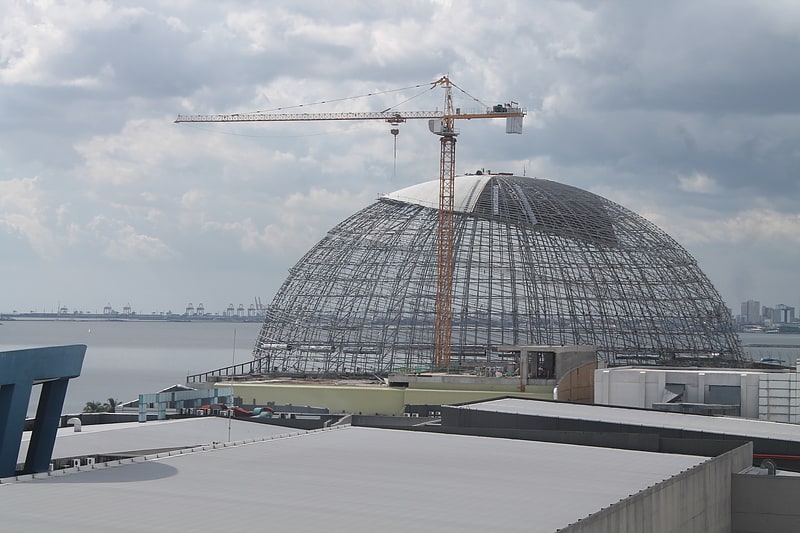
Museum. The Galeón: Manila–Acapulco Galleon Museum or the Museo de Galleon is a maritime museum under construction within the SM Mall of Asia complex in Pasay, Metro Manila, Philippines. The museum will feature Manila–Acapulco galleon trade and will also house a full-scale replica of a Galleon within its interior.[2]
Aliw Theater

Performing arts theater in Pasay, Philippines. The Aliw Theater is an events venue in Pasay, Metro Manila, Philippines. It is located in the Cultural Center of the Philippines Complex, adjacent to the Star City amusement park and the Manila Broadcasting Company.[3]
Address: Pasay, CCP Complex
Manila Film Center
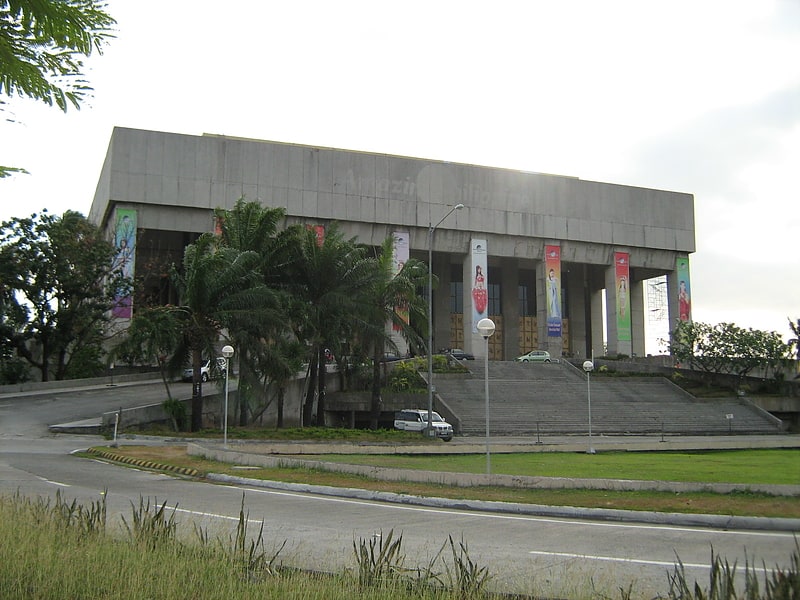
Building in Pasay, Philippines. The Manila Film Center is a national building located at the southwest end of the Cultural Center of the Philippines Complex in Pasay, Philippines. The structure was designed by architect Froilan Hong where its edifice is supported on more than nine hundred piles which reaches to the bed-rock about 120 feet below.
The Manila Film Center served as the main theater for the First Manila International Film Festival (MIFF) January 18–29, 1982. The building has also been the subject of controversies due to a fatal accident that happened on November 17, 1981. At least 169 workers fell and were buried under quick-drying cement.[4]
Address: Atang Dela Rama, Pasay (Pasay City District 1)
Coconut Palace
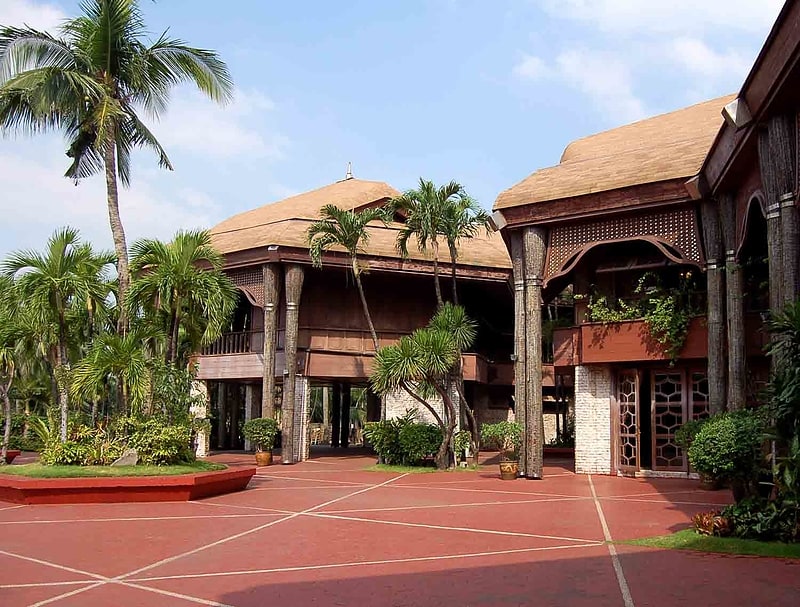
Official residence in Manila, Philippines. The Coconut Palace, also known as Tahanang Pilipino, is a government building located in the Cultural Center of the Philippines Complex in Manila, Philippines. It was the official residence and the principal workplace of the vice president of the Philippines during the term of Jejomar Binay.
It was commissioned in 1978 by former First Lady Imelda Marcos as a government guest house and offered to Pope John Paul II during the Papal visit to the Philippines in 1981 but the Pope refused to stay there because it was too opulent given the level of poverty in the Philippines.
The Coconut Palace cost ₱37 million to build and was partly financed by the coconut levy fund, which was set up to be used for the welfare of coconut farmers. Its construction is sometimes associated with Mrs. Marcos' edifice complex, a term popularized by an architectural historian as the "obsession and compulsion to build edifices as a hallmark of greatness or as a signifier of national prosperity." It is owned by the government-owned and controlled corporation the Government Service Insurance System (GSIS).
The Coconut Palace is made of several types of Philippine hardwood, coconut shells, and a specially engineered coconut lumber apparently known as Imelda Madera. Each of the suites on the second floor is named after a specific region of the Philippines and displays some of the handicrafts these regions produce. The palace is located on F. Ma. Guerrero Street at the Cultural Center of the Philippines Complex between the Folk Arts Theatre and the Sofitel Philippine Plaza Hotel. Before becoming the official residence of the Vice President, the palace was used for wedding receptions.
The palace is shaped like an octagon (the shape given to a coconut before being served), while the roof is shaped like a traditional Filipino salakot or hat. Some of its highlights are the 101 coconut-shell chandelier, and the dining table made of 40,000 tiny pieces of inlaid coconut shells. Highlighted as one of the Cultural Center of the Philippines' most striking structures for its architecture and interiors, the palace celebrates the coconut as the ultimate "tree of life". From the coconut's roots to its trunk, bark, fruit, flower and shell, the palace's design, form and ornamentation echo these elements.
The Coconut Palace has been a guesthouse for many prominent visitors, including the late Libyan strongman Muammar al-Gaddafi, Brooke Shields and George Hamilton.
The Coconut Palace has been featured in various television programs. On the fifth season of the reality series The Amazing Race, the Coconut Palace served as the "Pit Stop" when the competing teams went to Manila. The contestants were welcomed by Luli Arroyo, daughter of Former Philippine president Gloria Macapagal Arroyo. The Palace was made a primary filming location for the ABS-CBN television series Tanging Yaman, standing in for Malacañan Palace as the residence of the First Family.
The Coconut Palace underwent major renovations as it was being eyed as the official office and residence of the Vice President of the Philippines. On February 11, 2011, it was officially turned over to Vice President Jejomar Binay upon the signing of a lease contract with the Government Service Insurance System (GSIS) with a monthly rental fee of ₱400,000.[5]
Address: Pasay, F. Ma. Guerrero Street
Folk Arts Theater
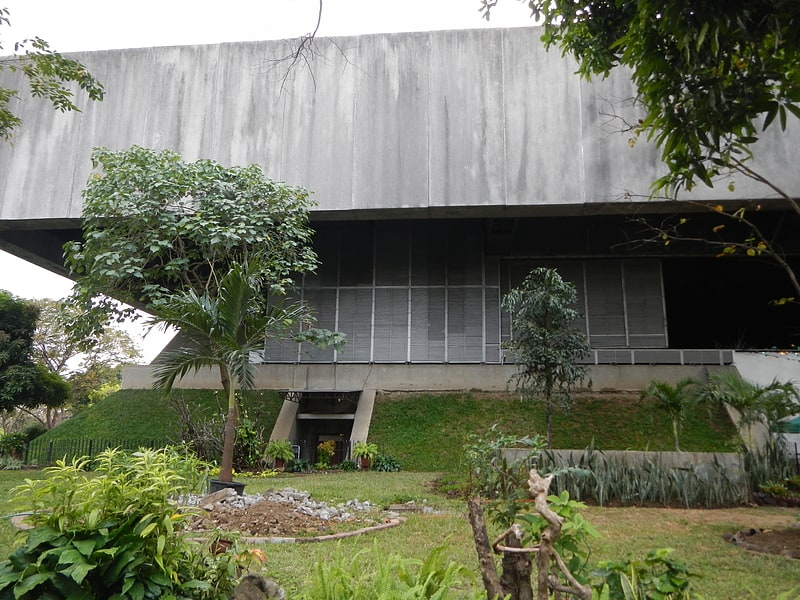
Theater in Manila, Philippines. The Tanghalang Francisco Balagtas, formerly known as the Folk Arts Theater, was a theater located in the Cultural Center of the Philippines Complex in Manila, Philippines. It is a covered proscenium amphitheater owned by the Cultural Center of the Philippines that was a popular venue for concerts during the 1980s and 1990s. The theater, named after Filipino poet Francisco Balagtas, has a seating capacity of 8,458 in 10 sections and features a broad fascia with a single column-to-column span of 80 metres. It is the largest single-span structure in the country, with a 100-by-100-metre roof resting on eight monumental columns. In her book "Cultural Center of the Philippines: Crystal Years," Visitacion de la Torre described it as a sheltered plaza with a roof that "appears to float, creating the impression that the building is a dream on one's tender hands."
The Tanghalan was commissioned by then First Lady Imelda Marcos for the Miss Universe 1974 Pageant, which was to be held in Manila for the first time. It was designed by Leandro V. Locsin and built in a record 77 days in time for the pageant. It was originally built to seat an audience of 10,000. It was not air-conditioned and was designed to allow a natural breeze to flow through.
The theater was inaugurated on July 7, 1974, with an extravagant cultural showcase dubbed "Kasaysayan ng Lahi", which featured a military parade by personnel of the Armed Forces of the Philippines. It hosted the international pageant in the same month where Amparo Muñoz of Spain won the title. In 1978, the theater was the venue of the first Philippine Folk Festival, and the first Metropop Song Festival. It was also one of the venues of the Manila International Film Festival, annual Lenten folk presentations, misas de gallo, and an Alamat series depicting Filipino legends or epics through dance and drama.
The theater has hosted many popular musical acts of the mid-1980s to the late 1990s, including Janet Jackson, Frank Sinatra, Paula Abdul, Puerto Rican group Menudo, British pop group 5ive, Pearl Jam, Mr. Big, James Ingram, Gary Valenciano, Martin Nievera, Kenny Loggins, Christopher Cross, and Regine Velasquez, and magician David Copperfield. The Folk Arts Theater is also used by different religious groups. Day by Day Christian Ministries, a large international religious organization, leased the area from 2005 to 2020. They have dedicated the Theatre as Bulwagan ng Panginoón.
The building also housed the main office of the National Music Competitions for Young Artists Foundation and the Printmakers Association of the Philippines. The building eventually closed in March 2020 amidst the early days of the COVID-19 pandemic in the Philippines. Even before the pandemic, there were already structural damages around the building and the CCP was undergoing a redevelopment process.[6]
Address: Pasay, Cultural Center of the Philippines Complex, Roxas Boulevard, Malate
APEC Sculpture Garden
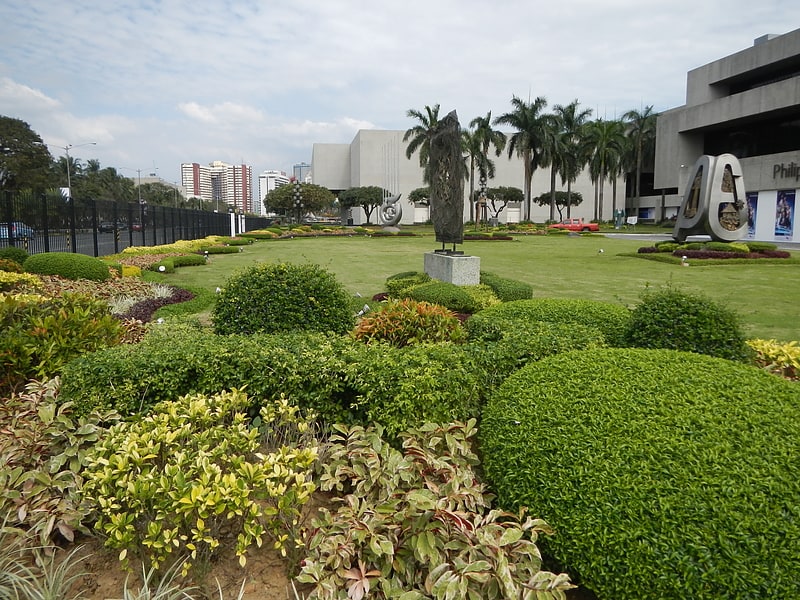
The Asia-Pacific Economic Cooperation Sculpture Garden is a sculpture park located in the right, left and front lawns of the Philippine International Convention Center at the CCP Complex in Pasay, Metro Manila, Philippines.
The sculpture garden was opened and dedicated on 22 November 1996. It was jointly organized by the Department of Foreign Affairs and the National Commission for Culture and the Arts, the curator of the garden, in commemoration of the APEC Philippines 1996.[7]
NAIA Road

Road in the Philippines. NAIA Road, formerly known and still commonly referred to as MIA Road, is a short 8-10 lane divided highway connecting Roxas Boulevard and the Manila–Cavite Expressway with Ninoy Aquino International Airport in southwestern Metro Manila, Philippines. It is also a major local road that links the cities of Pasay and Parañaque running approximately 2.5 kilometers underneath the elevated NAIA Expressway from R-1 in Tambo, Parañaque to the NAIA Terminal 2 in Pasay. En route, it intersects, from west to east, Quirino Avenue, Domestic Road, and Ninoy Aquino Avenue. The road ends at the entrance of NAIA Terminal 2.
The road also houses a small strip of shops across from Coastal Mall, Tambo Elementary School at Quirino Avenue, Park 'N Fly at Domestic Road, and the old Nayong Pilipino close to Terminal 2. The old NAIA Terminal 1 is accessible by turning south at Ninoy Aquino Avenue, which also leads to the Duty Free FiestaMall and continues on to Sucat as Dr. Santos Avenue. The new Terminal 3, on the other hand, is located on Andrews Avenue which can be accessed from Domestic Road. The road was originally named as MIA Road and was only renamed in 1987 when Manila's international airport became Ninoy Aquino International, in honor of the late Senator Ninoy Aquino.
NAIA Expressway runs through NAIA Road from the Sales Interchange of the Skyway to the junction of NAIA Road and Macapagal Boulevard via Andrews Avenue and Electrical Road, providing better access to all four terminals of the Ninoy Aquino International Airport, as well as the casino complex in Entertainment City.[8]
Tanghalang Pambansa
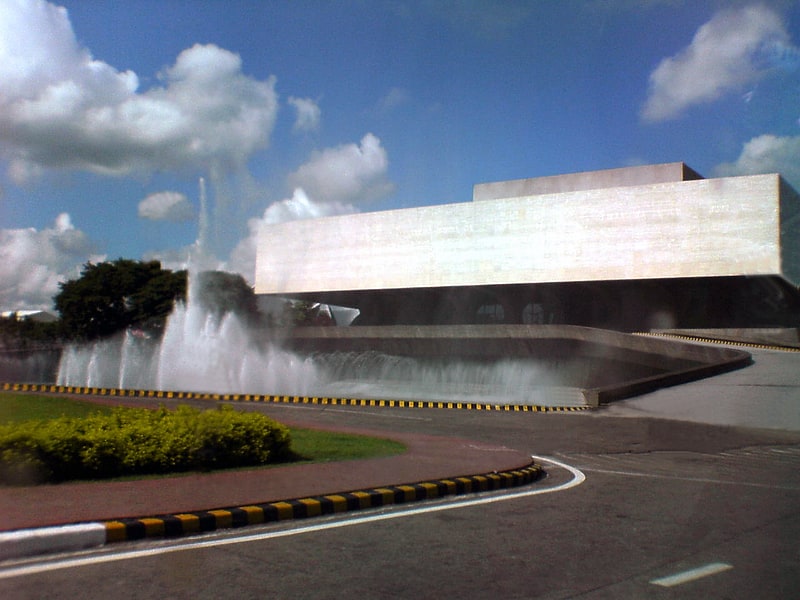
Theater in Manila, Philippines. The Tanghalang Pambansa, formerly Theater of Performing Arts, is a theater located in the Cultural Center of the Philippines Complex in Manila, Philippines.
It is the flagship venue and principal offices of the Cultural Center of the Philippines. Designed by National Artist for Architecture Leandro Locsin, its design was based and expanded upon the unconstructed Philippine-American Friendship Center. The Tanghalan is a primary example of the architect's signature style known as the floating volume, a trait can be seen in structures indigenous to the Philippines such as the nipa hut. It houses three performing arts venues, one theater for film screenings, galleries, a museum and the center's library and archives. Being a work of a National Artist, the brutalist structure is qualified to be an important cultural landmark as stipulated in Republic Act No. 10066.
Construction began in 1966, with Alfredo Juinio serving as structural engineer and Filipino firm DM Consunji as the builder. Originally called the Theater of Performing Arts, it was completed and inaugurated in 1969. Its first major renovation occurred in 2005 for the opening and closing ceremonies of the 112th General Assembly of the Inter-Parliamentary Union held in Manila. Included in the renovation were cleaning and replacement of the marble trim, installation of a new air-conditioning system and new carpeting.[9]
Address: Pasay, Cultural Center of the Philippines Complex, Roxas Boulevard, Malate
Upside Down Museum
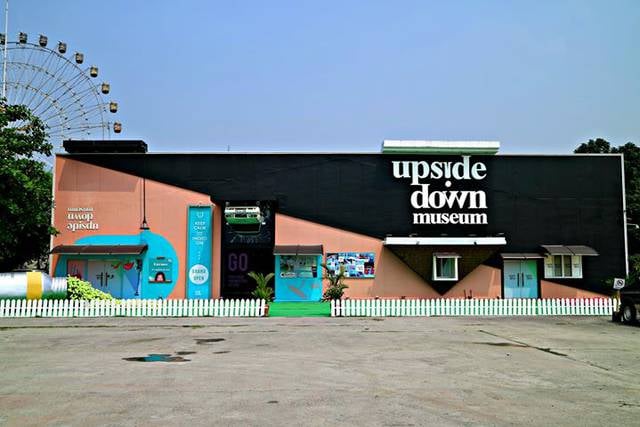
Museum, Specialty museum
Address: Roxas Boulevard, 1300 Pasay (Pasay City District 1)
Philippine International Convention Center

Convention center in Pasay, Philippines. The Philippine International Convention Center is a convention center located in the Cultural Center of the Philippines Complex in Pasay, Metro Manila, Philippines. The facility has been the host of numerous local and foreign conventions, meetings, fairs, and social events.
The PICC served as the office of the Vice President of the Philippines until 2005. It also previously housed the Philippine Charity Sweepstakes Office.[10]
Address: CCP Complex, Roxas Blvd., Pasay (Pasay City District 1)